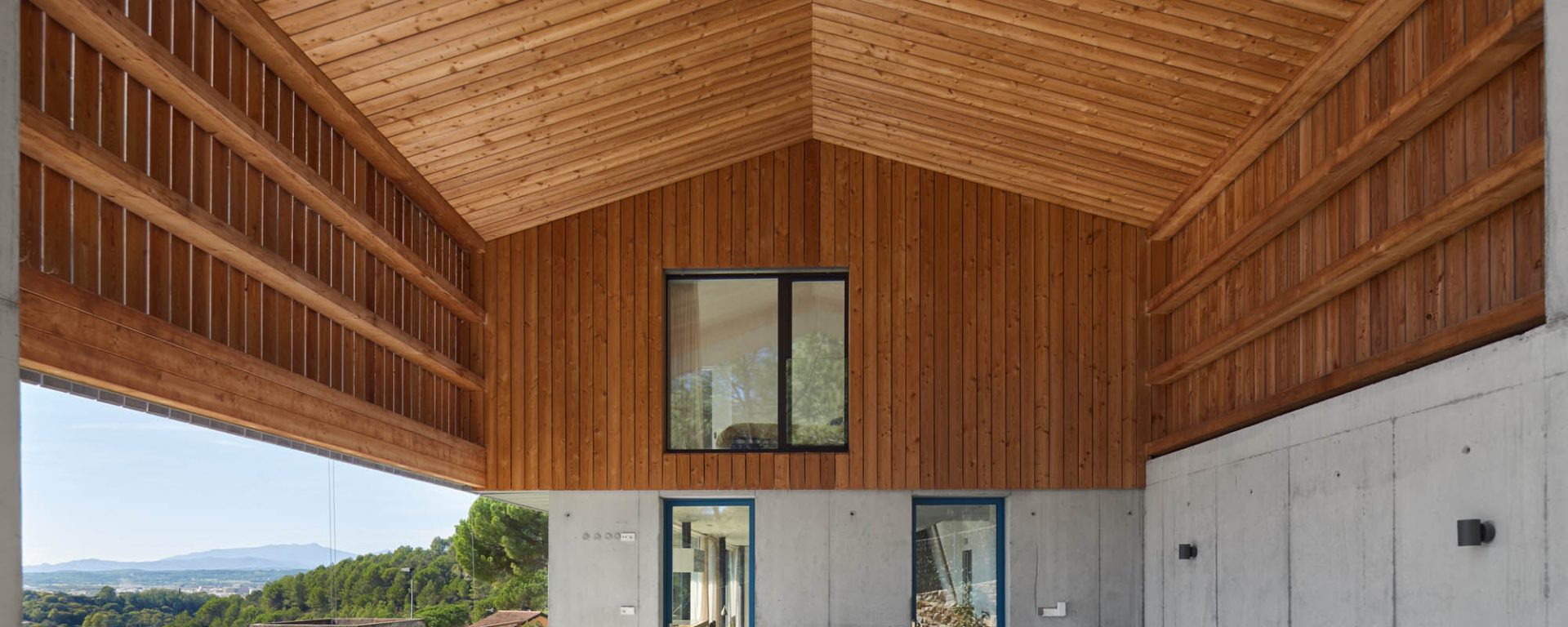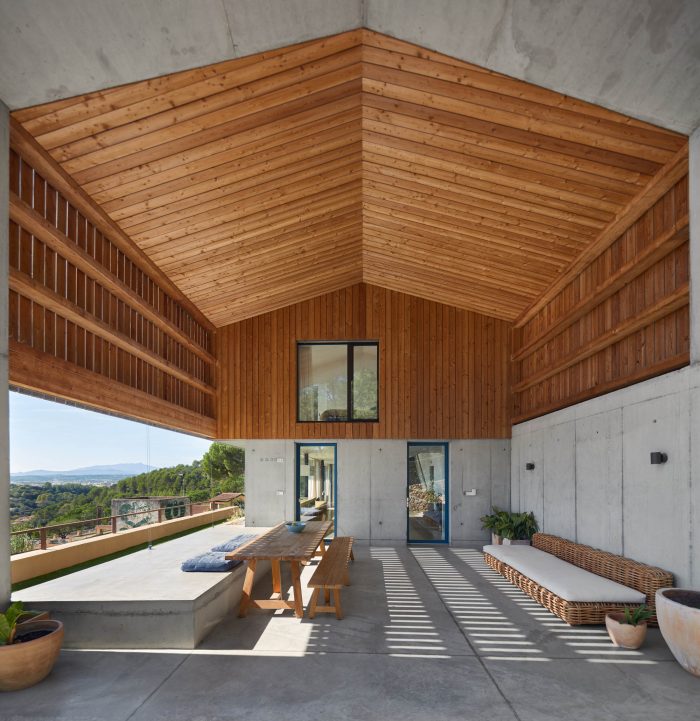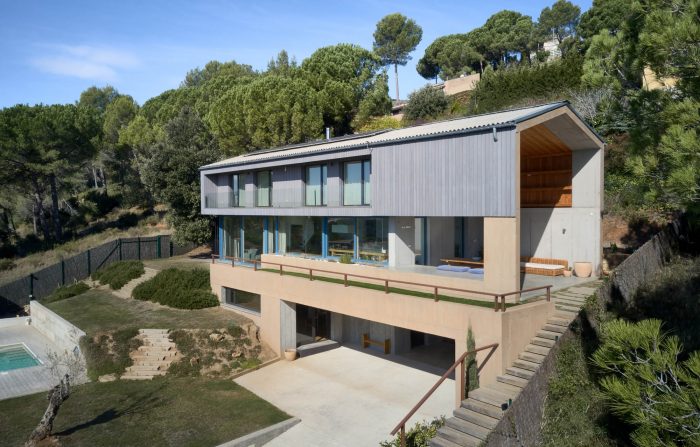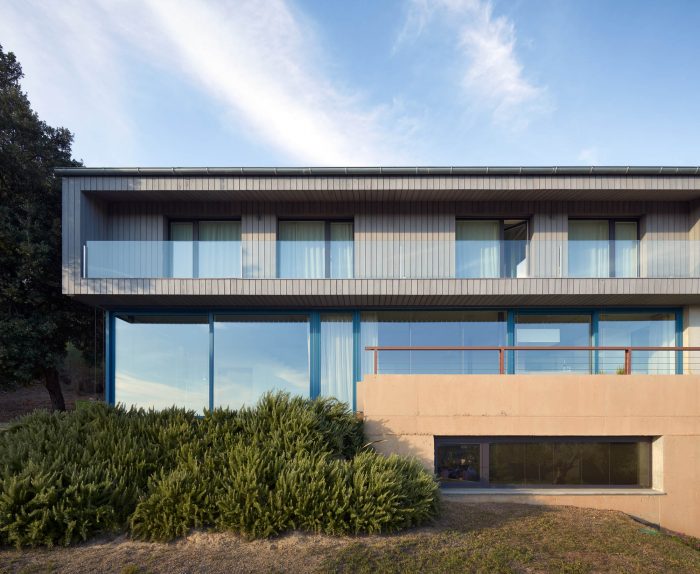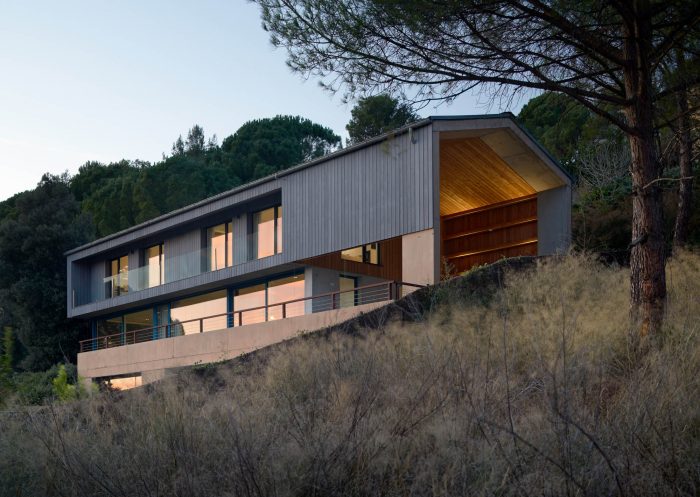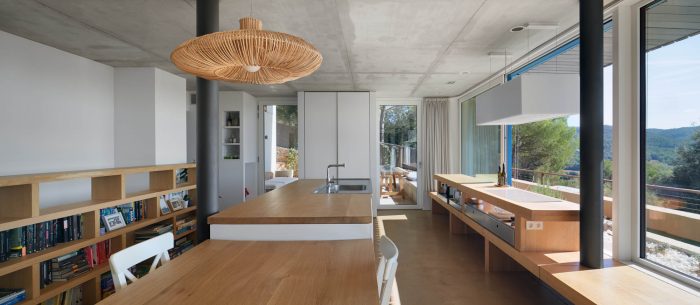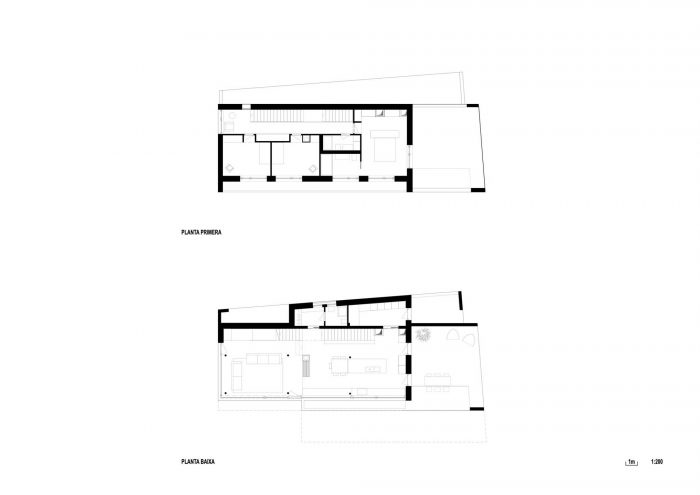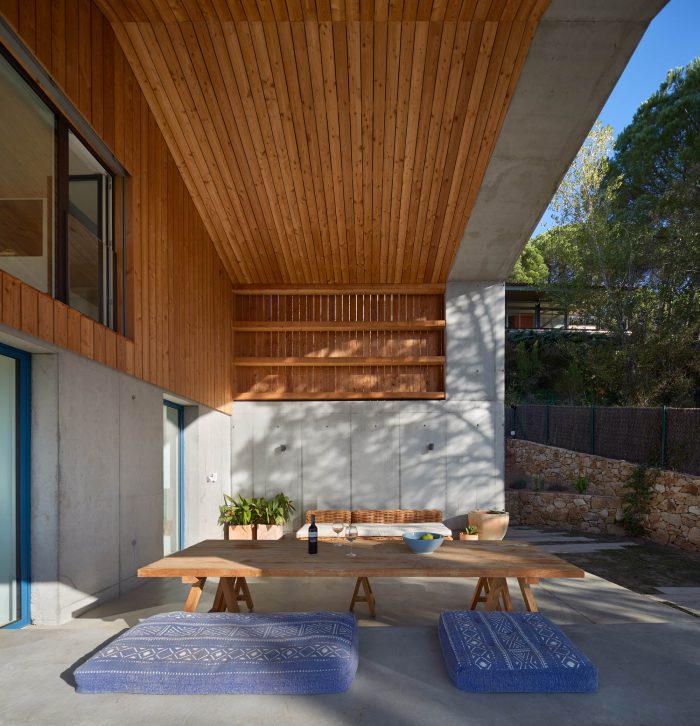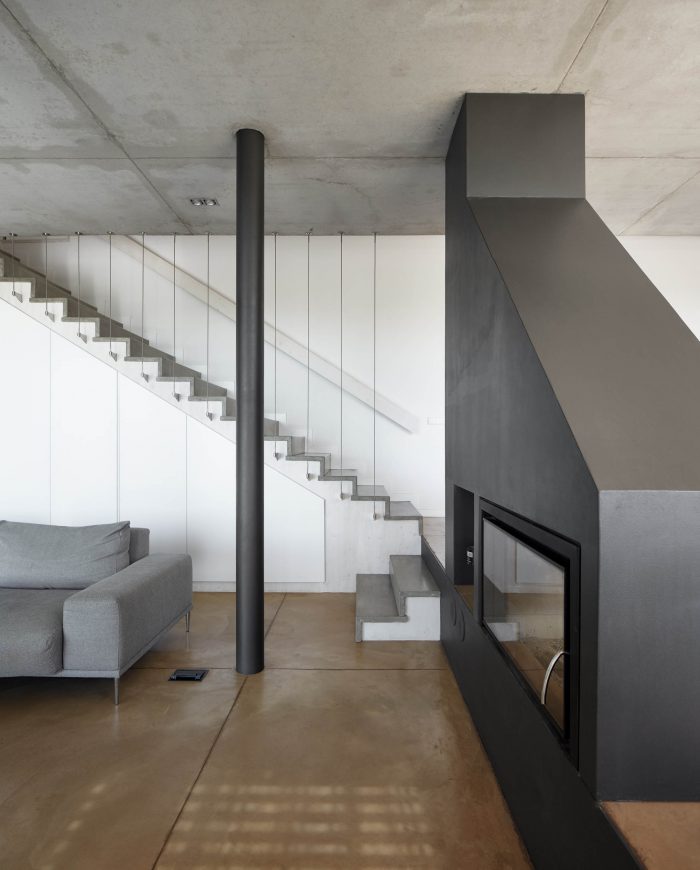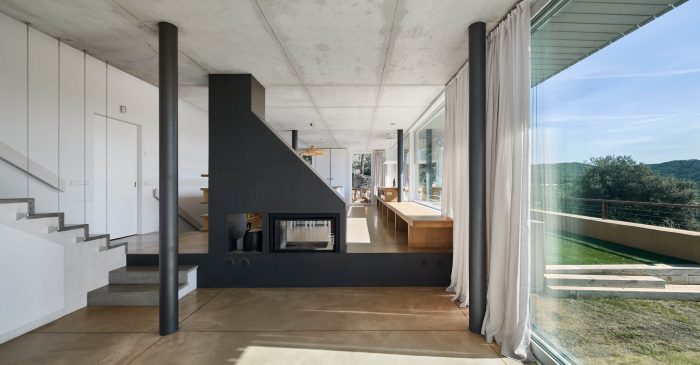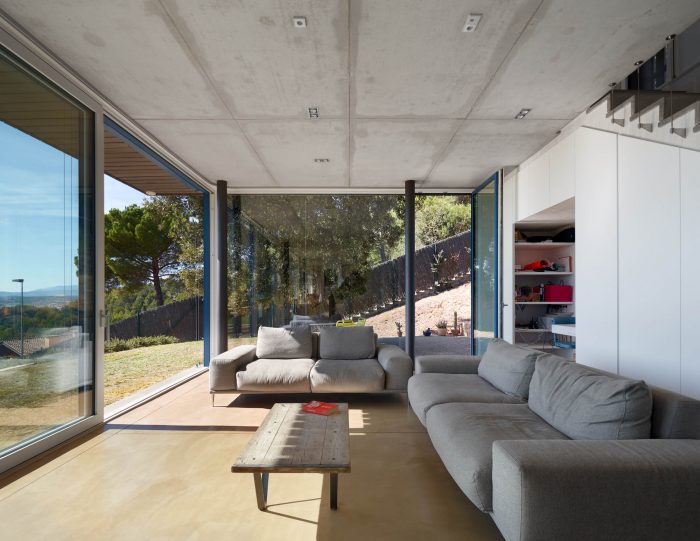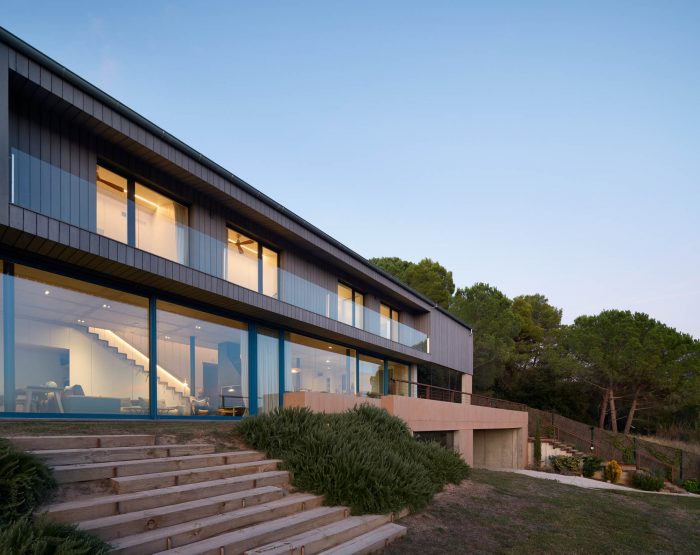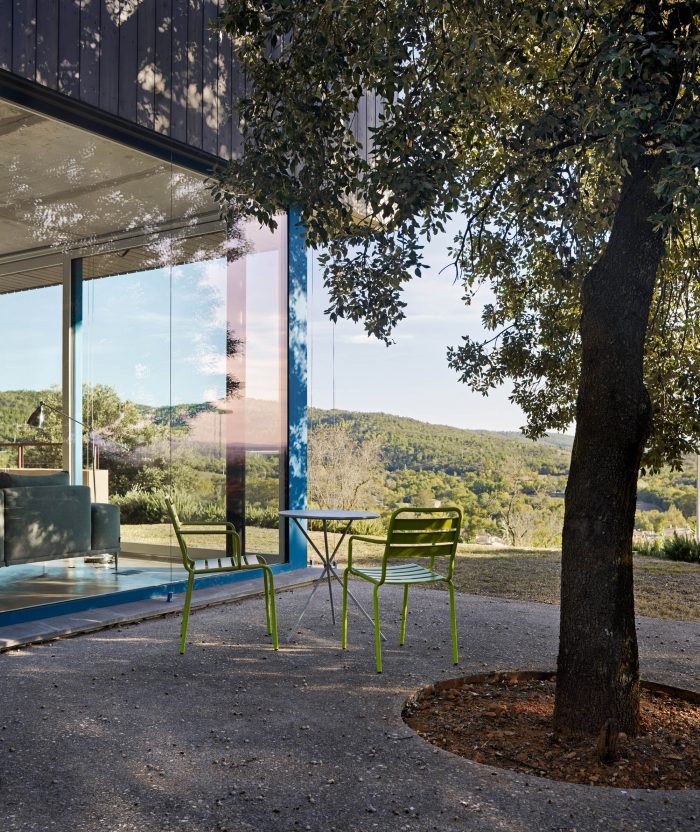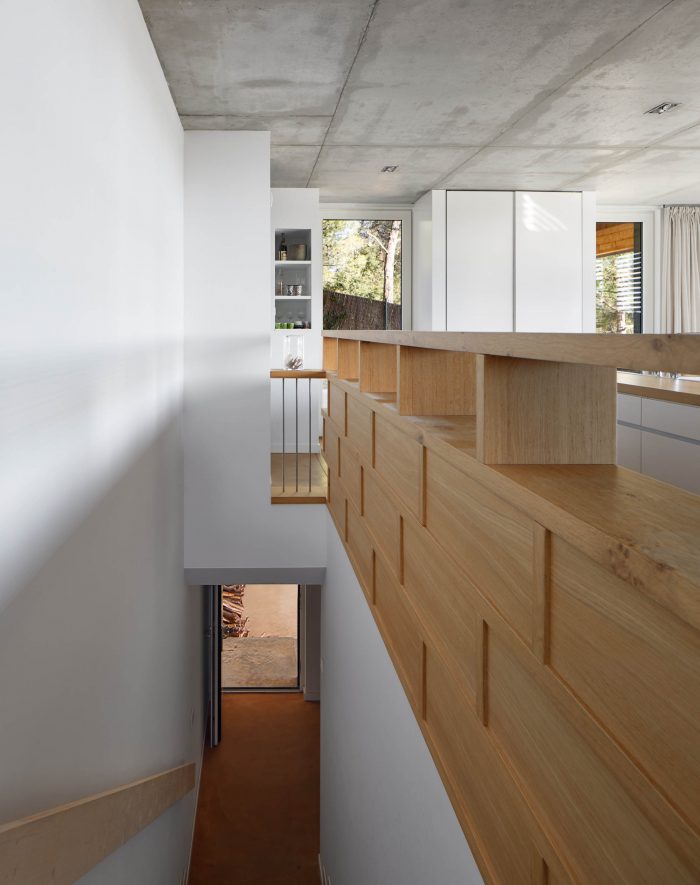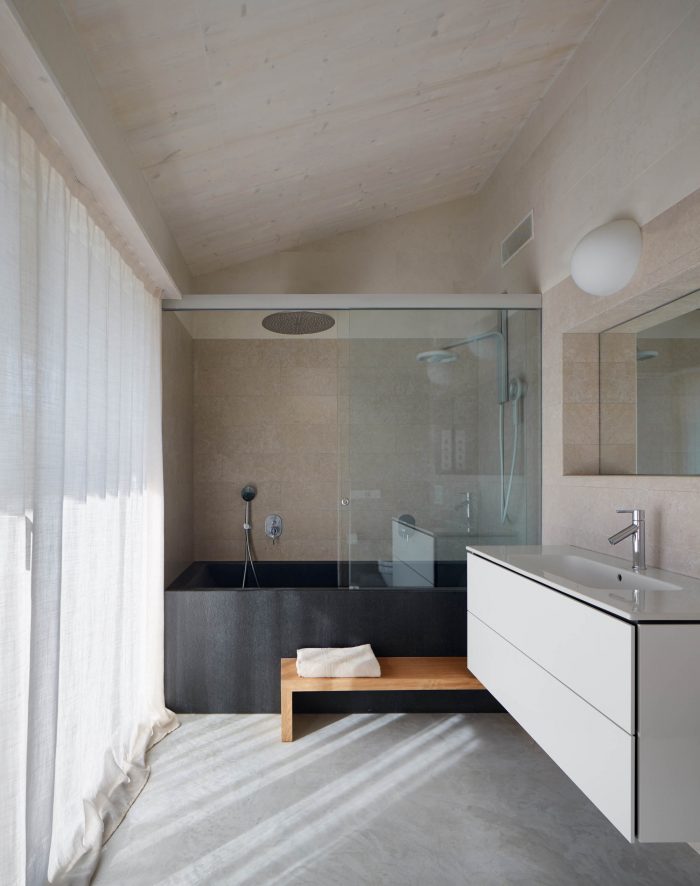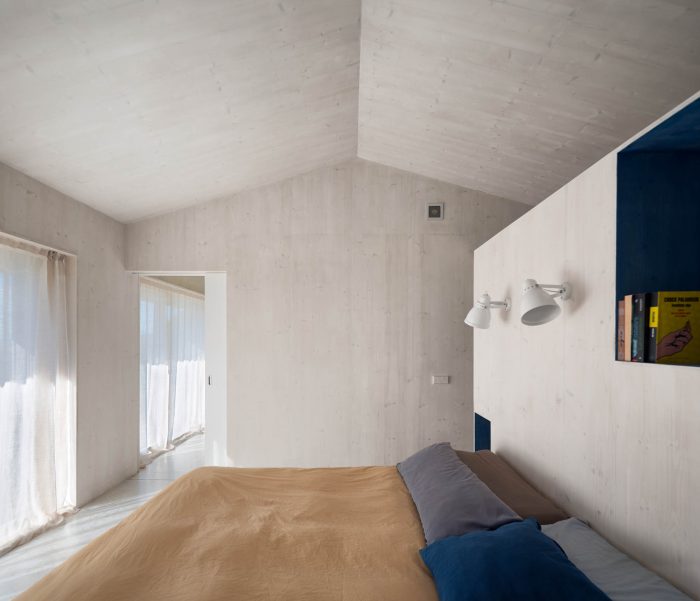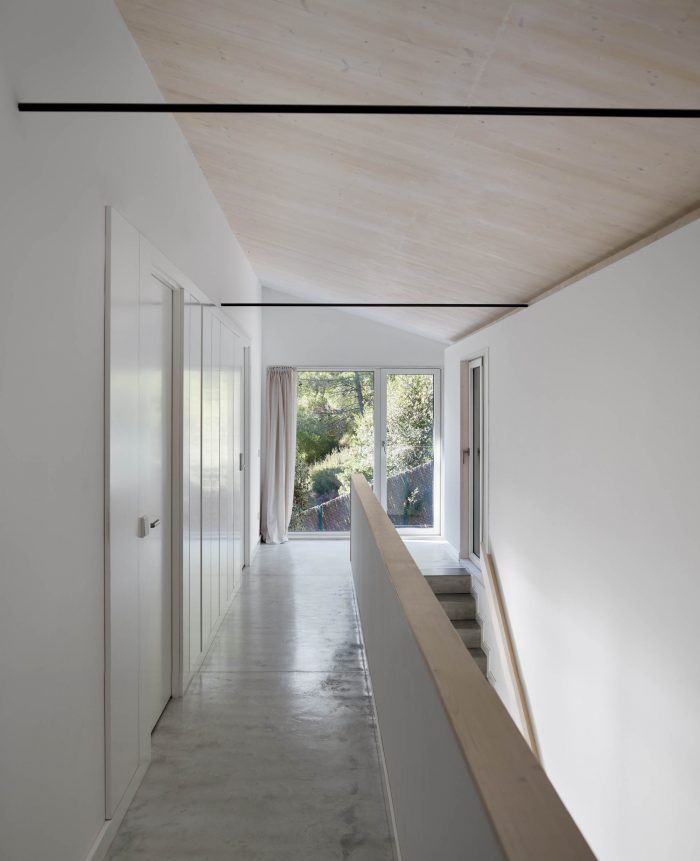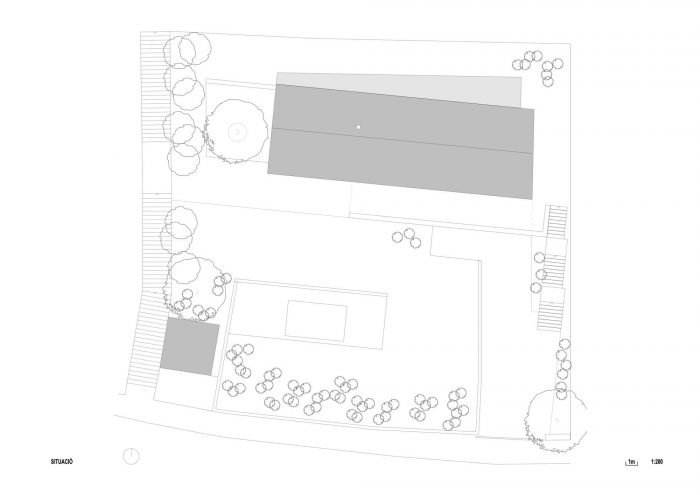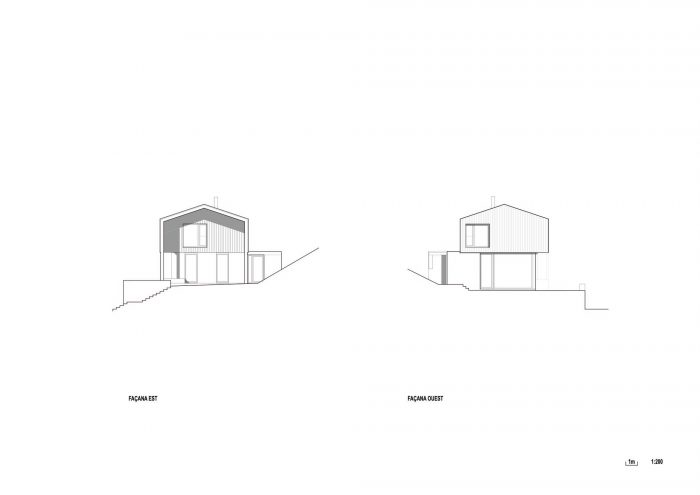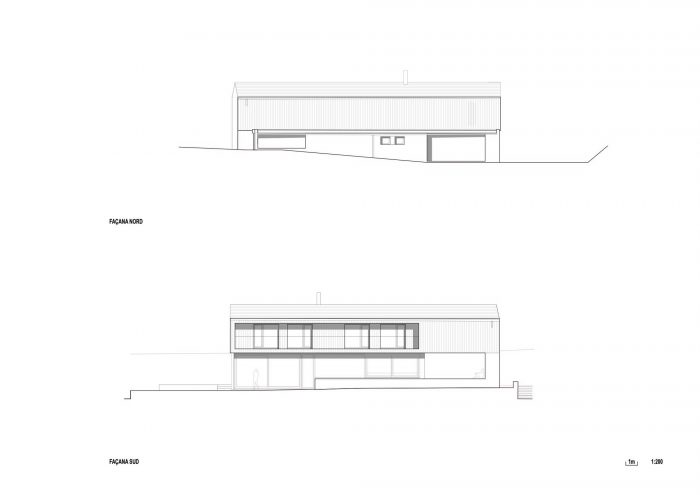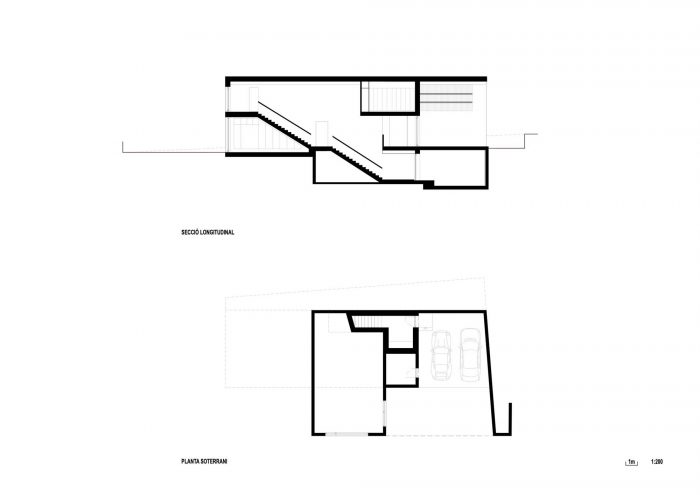P-HOUSE位于赫罗纳(西班牙),由一栋四面透风的单体建筑组成;其位于地块的上部,使其居民能够享受到优越的景观。该建筑结合了现代设计和极低能耗建筑(NZEB)的标准,其高能源效率已通过德国Passivhaus标准的认证。
P-House is located in Girona (Spain) and consists of a single building with four winds; its location in the upper part of the plot allows its inhabitants to enjoy privileged views. The building combines contemporary design with the criteria of a very low-energy consumption building (NZEB), and its high-energy efficiency has been certified by the German Passivhaus standard.
该建筑分为三层。地下室和底层由混凝土结构组成,是建筑顶层的基础,所有的建筑都是由木材制成。同样的物质化被外部化,并赋予外墙以身体,在一场游戏中,试图颠覆两种材料的颜色。一方面,通过在混凝土中使用棕色颜料,另一方面,通过对木材的处理,试图模拟材料的老化过程。这也使得减少维护成本成为可能。
The building is organized on three floors. The basement and ground floor are made of a concrete structure and are the base on which the top floor of the building is built, all of which is made of wood. This same materialization is externalized and gives body to the façades, in a play that seeks to invert the colours of both materials. On the one hand, through the use of brown pigments in the concrete and, on the other, through a treatment of the wood that tries to simulate the ageing of the material. This also makes it possible to reduce maintenance costs.
布局。一楼是公共区域–一个没有分隔的开放空间,其目的是为了尽可能多地捕捉自然光,同时促进构成该层的所有空间之间的视觉对话。这层楼的两层,除了区分这个环境的不同空间外,还允许高度的动态变化,使每个空间都有其独特性。这种高度的游戏,也存在于连接建筑两层的层叠式楼梯中,并向外延伸到门廊,其双重高度突出了这个空间的垂直性,创造了一个内部和外部的过渡。
Layout. The ground floor houses the communal areas –an open space without divisions whose intention is to capture as much natural light as possible– while promoting visual dialogue between all the spaces that make up this floor. The two levels of this floor, besides differentiating the different spaces of this environment, allow the heights to be worked in a dynamic, giving each space its singularity. This play of heights, which is also present in the cascading staircase that links the two floors of the building, extends outwards to the porch, where its double height accentuates the verticality of this space, creating a transition between inside and outside.
内部和外部的关系是一个重要的主题,并试图通过创造与每个内部空间相连的外部空间,如门廊、阳台或环绕整个建筑的各种露台,来加强这种关系。卧室被安排在建筑的上层;它们的内部大多是用白色釉面的木头包覆,与其他材料的色调相同,以试图产生一种适合这些空间的舒缓特性的轻盈感。在这里,所有的房间也都有自己相应的户外空间。
The interior-exterior relationship was an essential theme and which it was sought to enhance through the creation of exterior spaces attached to each interior space, such as the porch, the balconies or the various terraces that circumscribe the entire building. The bedrooms are organized on the upper floor of the building; their interiors are mostly clad in wood with a white glaze, the same tone as the other materials, in an attempt to generate a lightness that suits the soothing character of these spaces. Here too, all the rooms have their own corresponding outdoor space.
被动策略。从最初的草图开始,就考虑到了被动房建设的基本问题,如太阳的方向或建筑的高度紧凑性。主要的开口朝南,北面的立面几乎没有窗户。通过这种方式,在冬季可以最大限度地收集太阳辐射,被动地加热室内。
Passive strategies. From the very first sketches, elementary concerns in passive house construction, such as solar orientation or the high compactness of the building, have been considered. The main openings face south and the north façade contains hardly any windows. In this way, maximum solar radiation can be captured in winter to passively heat the interior.
该建筑没有传统的气候系统,仅通过Zehnder ComfoAir 550 ERV Luxe焓跨逆流热交换器提供空调,除了为房屋提供空调外,还为建筑内提供清洁和健康的空气。根据最新的计算结果,该建筑的年供暖需求为9千瓦时/平方米,制冷需求为1千瓦时/平方米。P-HOUSE的建设旨在成为传统建筑方法的替代品,因为传统建筑方法对环境的危害更大,对用户的成本也更高。
The building does not have a traditional climate system and is air-conditioned solely through Zehnder ComfoAir 550 ERV Luxe enthalpy cross-counterflow heat exchanger, which, in addition to air-conditioning the house, provides clean and healthy air inside the building. According to the latest calculations, the building has an annual heating demand of 9 kWh/m2 and a cooling demand of 1 kWh/m2. The construction of the P-House aims to be an alternative to traditional construction methods, which are much more harmful to the environment and much more costly for its users.
Architects: Energiehaus, Tigges Architekt
Area: 472 m²
Year: 2017
Photographs: Pol Viladoms
Manufacturers: Uniform, Zehnder, Block Porta, Cedria, Constructora Illes Medes S.A, Duplextil, Ecoespai, Keim Ecopaint Ibérica S.L., Rotex, SAS, Prefabricados de hormigón S.A, TBB
Lead Architects: Daniel Tigges (Tigges Architekt) y Micheel Wassouf (Energiehaus)
Engineer:Oliver Style y Vicenç Fulcarà, Progetic
Partnership:Maria Molins Sala
Structure:OTG 3
Domotics:Loxone
Sun Protection:Griesser
City:Girona
Country:Spain

